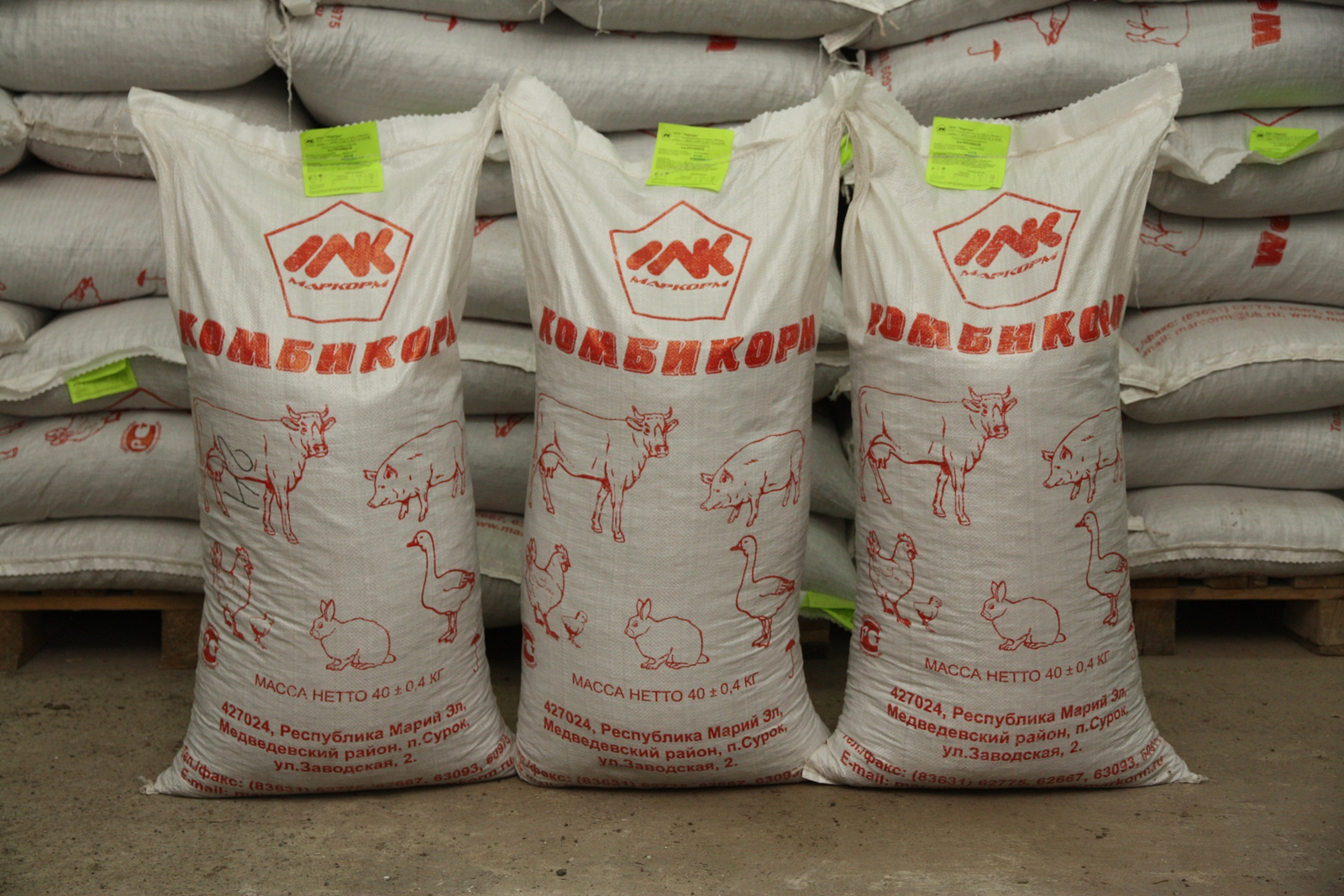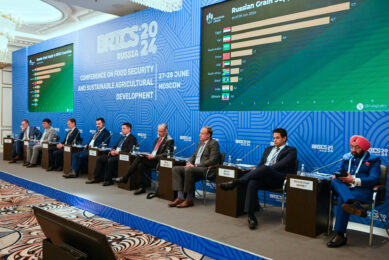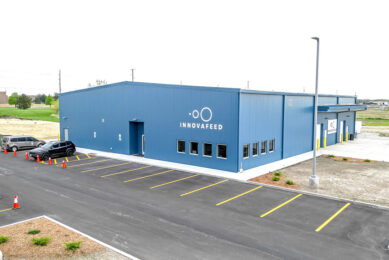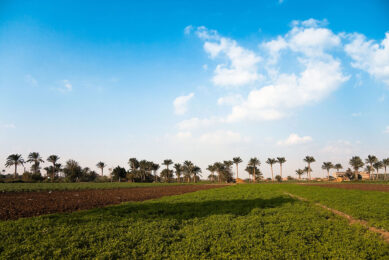New impetus in Russian feed production

Trade restrictions imposed last year on Russia have forced the country to renew its focus on domestic food production, the effect of which can also be seen in the animal feed sector.
Trade restrictions imposed by the Russian government last August on the supply of food products from the US, EU and a number of other countries is likely to give impetus to the development of the livestock industry in the country. This in turn will greatly boost the demand for feed production, representatives of the Russian Union of Compound Feed Producers have stated.
At the same time, official information of the Russian State Statistics Service (Rosstat), indicates that the domestic market is currently observing favourable prices for feed production – which is on average standing at about RUB 12,500 per tonne (US$ 297). This is nearly 25% higher than in the beginning of last year. In this situation, the profitability of feed production remains high enough to keep the margin of even small-scale companies at a comfortable level.
On the other hand the ban on imports has not made significant changes in the structure of the country’s feed market, as Russia has imported only about 1% of all consumed feed. However, experts note that the dynamics of the animal feed industry in the coming years will be directly related to the general state of agriculture in Russia, which in turn will depend on government support measures.
Feed sector in Russia growing steadily
Feed production in Russia has been growing steadily over the recent years, official Rosstat data confirms. In 2013/14 Russian feed mills produced 22.4 million tonnes of feed, a 5.4% rise in production compared with 2012/2013 and an 11.3% increase compared to 2011/2012. Additionally, statistical data shows that the rate of growth of feed production for different livestock sectors in the country varies.
Pig feed showed the greatest increase
For example, last season the most significant growth of feed production was achieved in the pig sector, which jumped 10.9% year-on-year to 7.5 million tonnes year-on-year. Compared to the level of 2011/2012 the growth amounted to 36.6%.
Russian Ministry of Agriculture experts note that here the increase of production took place mostly due to the rise in the pig population and the resulting growth in pork production. Official information confirms that as of July 1, 2014 the country’s pig population in industrial farms grew by 5.8% to 15.6 million heads. It is expected that the pig industry will remain the main driver of growth in the feed market. The forecasted increase in pork production is 6.5% to 2.85 million tonnes year-on-year, according to estimations of the USDA.
The volume of pork production on small-scale farms however, dropped. This resulted in the decrease of the so-called ‘shadow market’ of feed, as this category of farms usually use feed that is not reflected in official statistical data.
The production of feed for poultry has increased by 3.3% to 12.8 million tonnes. The number of heads of poultry in Russia during the past season increased by 2.6% to 529.2 million heads. Poultry numbers on industrial farms grew by 3.3% to 402.9 million heads.
Production of cattle feed remained approximately at the same volume as the previous season, reaching 2.0 million tonnes. This is due to the general crisis of the beef and dairy industries in the country.
State support programmes could boost feed sector by 15% in 2015
Given the tendencies of the recent years, Russian experts agree that the development of the country’s feed industry will depend on the general situation in the livestock industry. The growth of meat and milk production, projected within the updated program of state support of livestock producers, is likely to give impetus to the rise of compound feed production.
Thus, within the project of the ‘Specific measures for the support of the agricultural producers in the context of sanctions,’ Russia may allocate up to US$ 3 billion of additional funds for the development of domestic agriculture, with the result that in 2015 the predicted growth of the industry will accelerate and feed production will rise by 3.4 million tonnes, or 15% compared with the current amount. This is based on the most optimistic scenario.

Kamchatsky feed mill, the largest feed production enterprise of the Russian Far East.
In general, experts and market analysts agree that the sanctions imposed on Russia will be useful for the domestic livestock and feed market. “We expect to see noticeable growth in the demand for compound feed from agricultural organisations as early as the first quarter of 2015,” commented Alexei Mikhailov, spokesperson for the Ministry of Agriculture’s livestock department. “All current measures of the government to support agriculture will be kept in place and new initiatives will be added which should become the driving force behind the increase in production volume.”
“The increase in production in this context is a natural reaction. It should be understood that many companies in Russia today do not operate at full capacity due to the lack of sales markets. Furthermore, many feed mills still in their infancy have the possibility to quickly ramp up production capacity by 40-100%. So, today the industry has every opportunity for rapid growth,” commented Russian agricultural analyst, Eugene Gerden.
The flip side
Other experts however, believe that the current growth forecast of the industry looks too optimistic. They fear that economic problems in the country and growing meat imports from Asia and South America will significantly cut the growth potential of the meat and feed industries.
Western sanctions against Russia imposed last year have had a heavy impact on the country’s economy, and the country’s government is considering cutting the budget for 2015. This will probably take away part of the money designated for the state programmes for the development of agriculture. This lack of funds to support growth of the industry as well as the growing imports makes experts doubt that the goals of the current development programmes will be really achieved.
“Contrary to popular belief, a ban on food imports from the US, EU and some other countries in Russia did not significantly increase the domestic demand for animal feed,” declared Dmitry Rylko, president of the Institute for Agricultural Market Studies.
According to Rylko the total consumption of feed in Russia already reached 31.5 million tonnes, taking into account the shadow market, imports and carryover stocks at the end of the year. “Based upon the current marketing situation, the maximum possible growth of the market, due to the Russian response to the sanctions will not exceed 10% or 3 million tonnes over the coming years,” he added.
However, in the opinion of Rylko such growth is unlikely: “This scenario assumes the independent replacement of prohibited imports, which today is actively replaced by the import supplies from South America and China,” he concluded.
This article was featured in AllAboutFeed magazine, to read other published articles see our digital magazine











